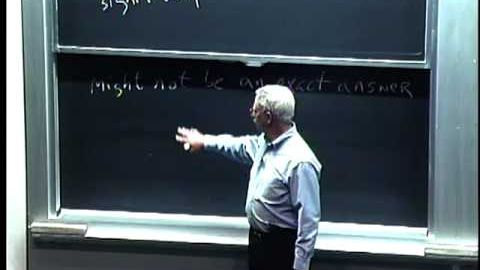Lec 5 | 麻省理工學院 6.00 計算機科學與程序設計導論,2008年秋季。 (Lec 5 | MIT 6.00 Introduction to Computer Science and Programming, Fall 2008)
Jason 發佈於 2021 年 01 月 14 日  沒有此條件下的單字
沒有此條件下的單字US /ˈnʌmbɚ/
・
UK /ˈnʌmbə(r)/
- n. (c./u.)數字;短曲;短歌;總數
- v.t.編了號的;給...編號;計入
US /ˈænsɚ/
・
UK /'ɑ:nsə(r)/
- v.t./i.給予回答;給予答覆;回答
- n.回答;答覆;答案;回答
- adv.更好
- adj.很大的;非常重要的;偉大;卓越的;擅長的;(親屬關係)
- n. (c.)成功人士
US /ˈprɑbləm/
・
UK /ˈprɒbləm/
- n. (c./u.)問題;難題;數學習題;電腦問題;難搞的人
- adj.問題的

